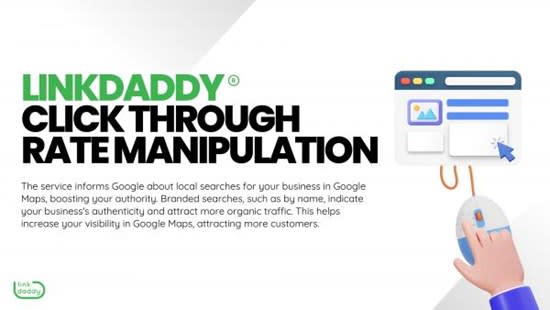CTR Control: A Game Changer for Digital Campaigns
The surge of CTR manipulation has actually indisputably changed digital advertising and marketing techniques, giving online marketers with devices to improve engagement and drive traffic effectively. What effects might this stabilizing act hold for the future of electronic projects?
Understanding CTR Control
Although click-through rate (CTR) control might seem like a straightforward tactic in digital advertising and marketing, it incorporates a series of strategies targeted at synthetically inflating engagement metrics. This manipulation can take different types, consisting of using click farms, crawlers, or deceitful ad positionings that deceive consumers into clicking. These strategies can jeopardize the stability of performance data, making it testing for marketing professionals to gauge the authentic performance of their campaigns.
Furthermore, CTR control raises honest concerns, as it undermines the transparency of electronic advertising and marketing. The reliance on inflated metrics can cause misguided advertising and marketing decisions, skewing source allocation and project strategies. Consequently, businesses may invest greatly in channels and tactics that show up successful but do not generate genuine engagement or conversions.

Advantages of Click-Through Rate Optimization
Maximizing click-through rate (CTR) is vital for boosting the efficiency of electronic advertising and marketing campaigns. A higher CTR shows that a larger proportion of users are involving with the material, which can cause boosted internet site traffic and better conversion prices. By improving CTR, brands can properly allot their marketing resources to campaigns that yield the highest returns.
Among the main benefits of CTR optimization is the capacity for boosted ad placement and lower costs - CTR Manipulation. Platforms like Google Advertisements compensate higher CTRs with better ad positioning and decreased cost-per-click (CPC), permitting online marketers to extend their budgets better. In addition, a well-optimized CTR can boost brand visibility, as greater interaction prices commonly correlate with increased natural reach

Techniques for Reliable CTR Manipulation
To effectively control click-through rates (CTR), online marketers can use a variety of tactical methods that enhance user involvement and drive website traffic. One fundamental technique is optimizing advertisement copy to develop engaging and action-oriented language. CTR Manipulation. Using solid call-to-action (CTA) phrases urges users to take prompt action, increasing the probability of clicks
Another reliable technique is A/B testing, which permits marketing professionals to compare various advertisement variations. By methodically evaluating performance metrics, they can identify which aspects reverberate finest with the target audience, therefore refining their approaches for optimal effect. Furthermore, leveraging aesthetically enticing graphics and succinct messaging can capture attention promptly, making it a lot more possible that customers will involve.

Lastly, enhancing landing pages to make sure a seamless individual experience can decrease bounce prices and motivate additional interaction, ultimately promoting greater CTR. By incorporating these methods, marketing experts can properly adjust CTR to accomplish their project purposes.
Gauging Success in Digital Projects
Gauging success in electronic projects needs a clear understanding of essential efficiency indications (KPIs) that line up with campaign purposes. KPIs function as quantifiable metrics that help assess the performance of different approaches utilized throughout the campaign. Typical KPIs include click-through prices (CTR), conversion rates, cost per procurement (CPA), and return on investment (ROI)
To effectively gauge success, it is vital to establish details, measurable objectives initially of the campaign. If the key objective is to boost brand understanding, metrics such as impressions and interaction rates may be focused on. In contrast, projects concentrated on direct sales would take advantage of an extra comprehensive evaluation of conversion prices and earnings produced.
Normal analysis of these KPIs enables online marketers to make data-driven choices, optimizing their methods in real-time. Making use of analytical devices can aid in tracking efficiency and identifying patterns, enabling swift modifications to boost project outcomes. Eventually, a comprehensive technique to gauging success not just highlights areas for enhancement yet also strengthens the general effectiveness of digital advertising and marketing initiatives, driving sustained growth and interaction navigate to this website in the long-term.
Future Patterns in Digital Advertising And Marketing
Preparing for the future of digital advertising discloses a landscape formed by rapid technical innovations and transforming customer actions. As synthetic intelligence and device understanding remain to develop, marketing experts will progressively take advantage of these innovations to customize campaigns at an unprecedented scale. Predictive analytics will enable brands to expect consumer needs, maximizing advertisement positionings and content shipment in real time.
Additionally, the rise of voice search and smart gadgets is changing how consumers interact with my website digital content. Marketing professionals will certainly require to adapt their techniques to guarantee presence across numerous platforms, consisting of voice-activated aides. This change demands an emphasis on conversational marketing, emphasizing engagement via discussion as opposed to standard marketing strategies.
Additionally, personal privacy problems are prompting changes in information collection methods. Transparency and honest data use will become paramount, driving brands to promote count on and commitment amongst consumers. The recurring development of social media systems will additionally influence advertising and marketing methods, with a heightened focus on authenticity and user-generated web content.
Conclusion
In summary, CTR adjustment stands for a substantial improvement in digital marketing strategies, using prompt benefits with enhanced involvement metrics. The continuous advancement of electronic marketing will certainly depend on this fragile interaction, shaping the future landscape of brand-consumer interactions.